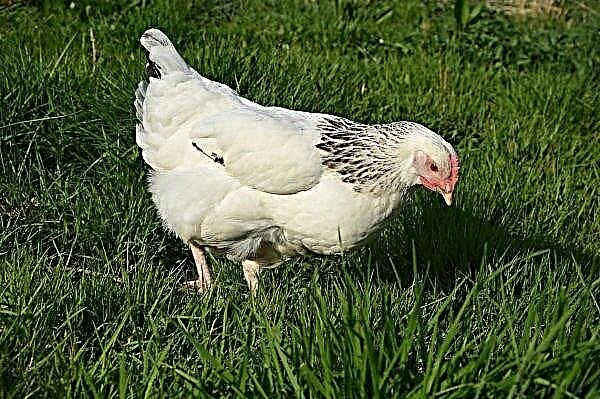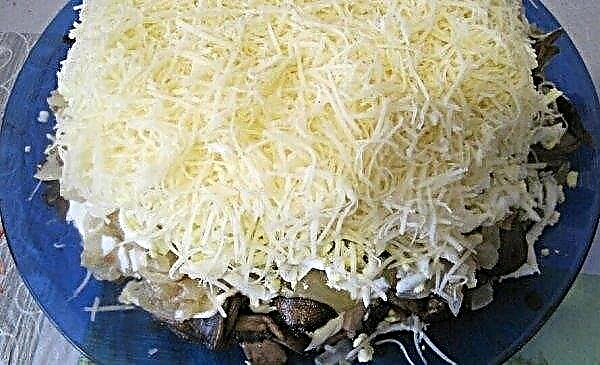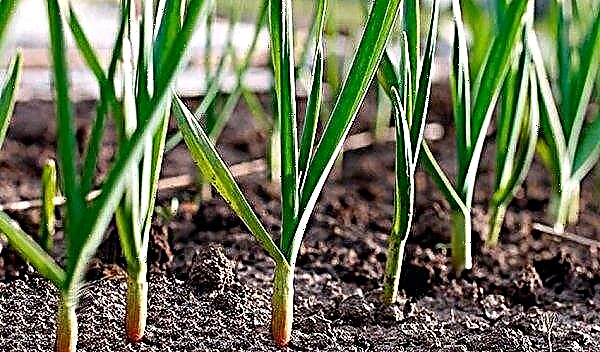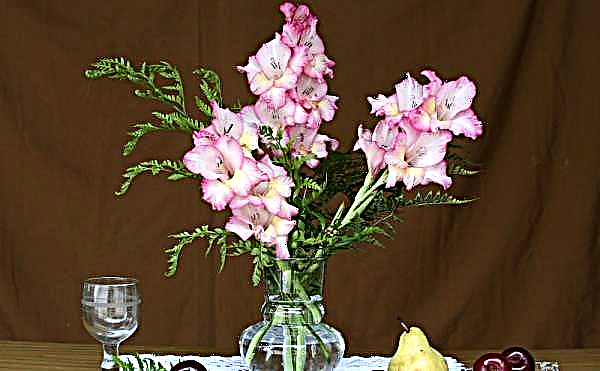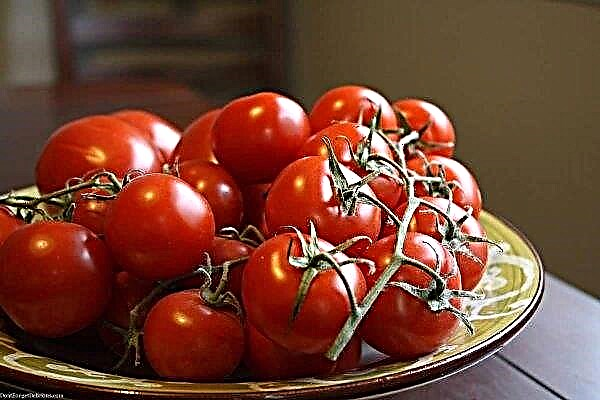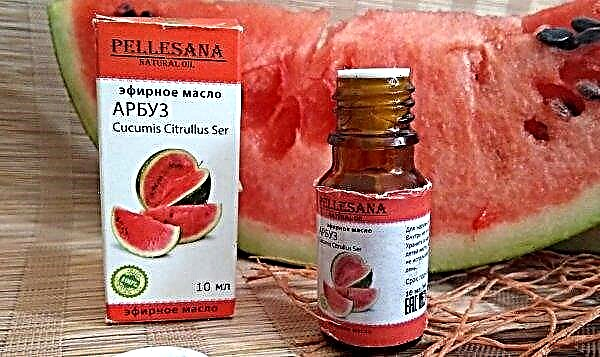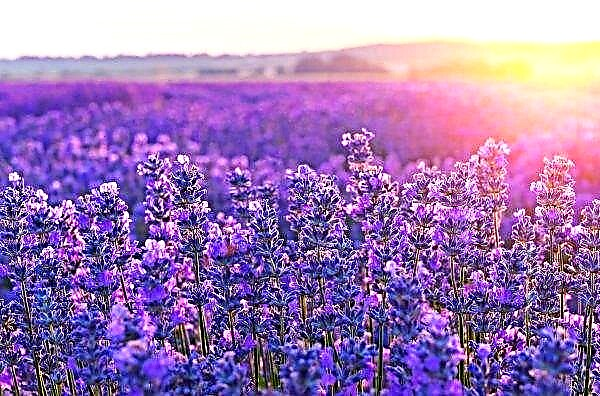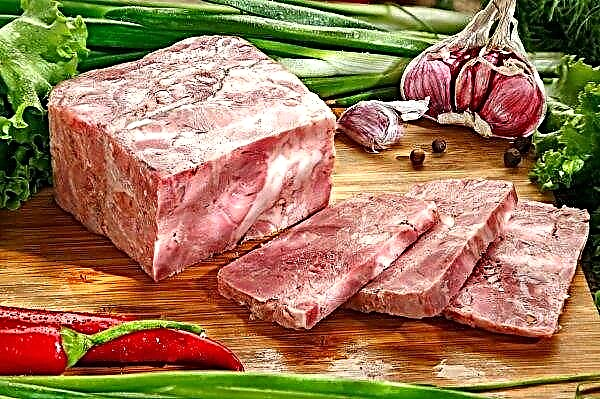Onion is not as widespread as a bulb variety, but compared with the latter, it is characterized by high cold resistance and good taste data of the green part, for which it is usually grown. We suggest that you familiarize yourself with the main varieties of vegetables, as well as learn about the rules for its competent cultivation, starting from the stage of sowing seeds and ending with the harvesting of green crops.
What is onion batun?
Onion batun belongs to perennial herbaceous plants of the Onion family and is characterized by the presence of elongated bulbs, which in many cases may be underdeveloped at the time of collection. The thick stem part of the plant grows to 1 m in height and has a hollow swelling in the middle part. Leaf plates are arched, the shape of an umbrella resembles a ball, and the pedicels are usually thin, but several times longer than the perianth with yellow, oblong and fairly sharp leaves.
The green leaves of the plant contain a large number of nutrients and nutrients, the main of which are ascorbic and nicotinic acid, thiamine, riboflavin, potassium, magnesium and iron. The amount of vitamin C here is two times higher than in the green part of the popular onions.
The territory of Asia is considered to be a possible homeland of batun, but in the wild it is also found in Siberia, China, and Japan. On the territory of the Russian Federation it can be grown almost everywhere, with the exception of the extreme northern regions.
Did you know? Onions - the most common plant in the world, grown in 175 countries. Mass sowing of the crop is approximately twice the area of wheat, which is considered the record holder in terms of yield.
Varieties of onions batun
As with other crops, the first thing you should pay attention to is choosing the right variety. In any case, onion batun gives a good harvest, however, this is not the only criterion for selecting a plant, and in order to achieve maximum performance it will be necessary to take into account the cold tolerance of the crop and the ripening time.
Given this, we suggest learning about the features of the following varieties of the described culture:
- Salad - early ripe version, with high resistance to lower temperatures. Onion stalks grow up to 50 cm, durable shoots have a standard swelling and are characterized by increased branching. The taste of the salad variety practically does not differ from the taste characteristics of other varieties and perfectly combines tenderness and small spiciness. A characteristic feature of the variety is resistance to coarsening during storage and excellent resistance to typical onion ailments.

- April. As the name implies, sowing and ripening of the green part of the plant occurs in April, which makes the variety one of the earliest. Leaf plates are dense, swollen and grow up to 50–100 cm in height. Even after cutting, they retain their appearance for a long time, which allows you to not rush with their application. The taste of April onions is soft, sweet, with a small speck. Among the advantages of the April variety - high resistance to diseases and pests, as well as good productivity, up to 40 shoots from one bush.

- Bahia Verde - medium-yielding variety, with 40-centimeter stems. This hybrid variety is a cross between onion and a vegetable. Fragrant leaf plates - saturated green, with a characteristic waxy coating over the entire surface. They taste soft, but still with spicy, sharp notes. It can be grown from early spring until the end of autumn, and if there is shelter, the whole winter period.

- Russian winter - A mid-early variety, which, unlike other varieties of a connecting rod, has a long and massive bulb suitable for culinary purposes. The leaf plates are light green in color, with a slight wax coating, up to 33 cm long. They have a slightly sharp taste, and in one cut you can get up to 2 kg of green crop.

- Baikal - Onions of early ripening, with dark green leaves up to 35 cm in length. Over the entire surface of the sheet plate, a waxy coating is clearly visible. The bulb is small, cylindrical in shape, and does not have high commercial value. From 1 m², you can collect up to 1.2 kg of greenery.

- Seryozha - frost-resistant interspecific hybrid, with early ripening. The length of bluish-green leaves with a strong waxy coating usually does not exceed 55-60 cm. All of them are characterized by a semi-sharp taste and ability to grow quickly, and the high content of vitamin C and universal purpose are considered to be additional advantages of the variety.

Onion seedling cultivation
Sowing seeds of batun for seedlings at home is carried out in late February or early March or early April, and it is advisable to transplant grown seeds in an open area not earlier than the end of May or the beginning of June. In September, green onions can be collected together with false onions and prepared for laying for storage. Consider all the stages of growing not quite an ordinary culture.
Important! Each variety has its own recommended planting scheme, the compliance with which depends on yield indicators. Therefore, if you sow the seeds too densely, you have to thin out the seedlings immediately after they appear.
Seed and soil preparation
After purchasing the seed, the first thing to do is to properly prepare the soil and the seeds themselves for sowing in boxes. The soil for the described plant should be sufficiently nutritious and loose, therefore, a mixture of equal parts of humus and sod land is suitable for the role of the optimal substrate, on a bucket of which it is useful to add 2 cups of wood ash and 70-75 g of mineral components intended for garden crops. The finished composition is once again mixed and warmed well in the microwave (you can calcine in the oven), which will help disinfect the soil and rid it of pathogens.
Before the direct sowing of the seed material, it remains only to well loosen and moisten the earth, and after planting the seeds - to mulch the seedlings. The seeds themselves also need pre-sowing treatment, which in this case involves soaking them in water (for 24 hours) and cooling in the lower compartment of the refrigerator for the next 2-3 days. Before being placed in the soil, planting material must be dried to a state of flowability.
When growing at home, by the end of May you can get the first greens, but for maximum abundance of the crop, it is worth planting the grown seedlings in an open area and provide it with appropriate care.
Seed sowing technology
Properly selected and properly prepared seeds should be embedded in a substrate to a depth of 8–10 mm, after having prepared the corresponding furrows at a distance of 4–5 cm from each other. Instead of boxes, for sowing seeds, you can use individual pots, 4-5 cm in size: the so-called bouquet method of growing seedlings. In this case, one such pot will account for 3-4 seeds sprinkled with loose soil.
After planting, the surface of the substrate is leveled, compacted a little and covered with a 3-cm layer of calcined sand. At the end of the process, all that remains is to gently moisten the crops from the spray bottle, cover the container with film or glass and place it in a suitable room for further germination.
Did you know? The first mention of the bow dates back to 4000 BC. e. They can be found in the Sumerian images and in the papyri of the ancient Egyptians, which means that this culture is one of the first actively used in food.
Seedling Care
For the rapid growth and development of seedlings of onion of the batun, it is necessary to organize the appropriate conditions and provide suitable care. At the initial stages of cultivation, the temperature in the room with seedlings should be within + 18 ... + 20ºC, and as soon as the first shoots appear, boxes with future seedlings are transferred to a well-lit place for 7 days, with indicators + 9 ... + 12ºC.
In the future, after a week of cultivation under such conditions, seedlings can again be moved, but only so that in the daytime the air temperature is kept within + 13 ... + 15ºC, and at night it does not fall below + 10 ... + 12ºC. If you can’t lower the temperature indicators, then try to ventilate the room as often as possible, be sure to protect young shoots from drafts.
A significant role in the high yield of the onion of the batun is played by sufficient lighting (at least 12-14 hours a day), and given its limitations in the spring, it is useful to install artificial light sources near the plantings. A phytolamp or LED device should be placed at a height of 25-30 cm above the seedlings and can not be turned off during the first 2-3 days after sowing seeds.
Care of seedlings provides for timely watering and top dressing, as well as weeding of plantings, but only after the first true leaf appears on young plants.
The introduction of fluid into the soil should be moderate, without overmoistening the substrate. Immediately after sowing, it is advisable to use a spray bottle for irrigation, spraying water on the surface of the soil. If you use a standard watering can, there is a chance of flushing the seeds with water.
A week after the appearance of the first shoots, young plants are fed a solution of potassium salt (2 g) and superphosphate (2 g), diluted in a bucket of water. After 14 days, the feeding procedure can be repeated using the same described composition. After the appearance of the first true leaf on the seedlings, weeding of plants is carried out, so that between the adjacent there is no more than 3 cm of free space.
About a week before transplanting to the garden bed, seedlings grown at home begin to harden, taking to the balcony or simply opening the windows. At the initial stages, the duration of the boxes in cool conditions should not exceed 30-60 minutes, but after a week, in the absence of frost, onions can be left on the balcony for half a day or even longer. As soon as the seedlings can be on the balcony around the clock, without compromising their appearance, it can be planted in the open.
Planting seedlings in open ground
The planting dates for seedlings of onion in the garden are in late May or early June, when the soil warms up enough and the probability of return frosts passes. Separate, frost-resistant varieties can be replanted earlier, however, only after the seedlings undergo appropriate hardening at home. Plants with a well-developed rhizome and the presence of at least 3-4 true leaves are considered ready for transplantation. The stem thickness of such specimens is usually not less than 3-4 mm, but the plant reaches these values at the age of 50-60 days.
The onion is not demanding for heat, therefore, unlike the bulbous variety, it can grow quietly in the shade, the main thing is that the soil in the selected place be sufficiently fertile, moist, with a neutral or slightly acidic reaction. If possible, it is better to plant it on sandy and loamy soils, without the possible accumulation of moisture. Areas with peat and sand substrates are best avoided, otherwise shooting will not be possible to prevent.
2 weeks before planting, 5 kg of compost or humus are additionally added, and 15–20 g of potassium chloride and 30–40 g of superphosphate are added per square meter, after which the bed needs to be re-dug, loosened and leveled under furrows. The planting scheme of young plants should correspond to the values of 45 × 25 cm, and the entire subsequent transplantation process is carried out according to the standard plan: organizing holes, removing plants from seedlings, placing them in the center of the hole and filling with further watering and compaction.Important! To reduce the acidity of the soil, wood ash can be added to it, at the rate of 0.5 half-liter cans per 1 m². True, soil treatment should be carried out no later than 6 months before the alleged transplant of the connecting rod.
Outdoor Care
Caring for the planted plants involves performing the same actions as when growing seedlings at home, only the features of irrigation, top dressing and loosening of the soil will differ slightly.
Watering
Onion batun belongs to hygrophilous crops, therefore, it needs moderate, but regular moistening of the substrate. The main requirement is that the soil should be soaked with water to a depth of at least 20 cm. If the summer turned out to be moderately wet, with sufficient rainfall, then the regularity of additional irrigation should not exceed twice a week, but in arid times the plant will have to be watered every other day. Water for irrigation should be moderately warm (can be heated in the sun), settled and applied directly under the root, without contact with the leaves.
Feeding
A week after the onion is planted in the open, it can be fertilized with an organic compound in the form of a mullein infusion (1:10) or chicken droppings (1:15) dissolved in water. Fertilizing must necessarily be combined with watering, departing from the trunk of the plant at least 20 cm. In the future, you can repeat top dressing one more time, about two weeks after the first. Instead of organic matter, it is better to add 50–70 g of ash to each onion bush, after loosening and moistening the substrate.
Soil loosening
Onion batun loves loose and “breathing” substrates, so from time to time you have to loosen the bed with plantings, while removing weedy vegetation. The easiest way to perform the procedure is several hours after the next watering, with a frequency of 1 time in 2 weeks. In general, at least 6–8 such treatments are obtained for the entire season. True, a lot in this matter depends on climatic conditions and terrain, so if you notice that the crust on the bed with a bow is formed more often, then you will have to break it with a smaller interval. A large and strong plant will not grow in dense and knocked down soil.
Pest and Onion Disease
Many varieties of onion batun have good resistance to typical onion ailments, especially if they are planted in nutritious and loose soils.
However, it is impossible to completely exclude the possibility of damage to plantations by pests and diseases, and the following are considered the most typical problems in this regard:
Special insecticidal compounds like Fufanon or Iskra will help get rid of pests, and copper-containing preparations: HOM or Oksikhom can be used to combat downy mildew, and often only two treatments are needed, with an interval of 10 days.Unfortunately, the propagation of the onion of the batun through seedlings will not be able to protect it from all problems, even if most of its “life” plants will be in indoor conditions. Therefore, it is important to know how to prevent possible troubles in order to grow a strong and healthy crop.
The main preventive measures include:
- compliance with crop rotation requirements in the onion plot (it is advisable not to grow plants in the same place for 2-3 consecutive years);
- timely weeding and removal of weeds, which can thicken plantings, thereby contributing to the spread of fungal diseases;
- moderate watering and sufficient cultivation, with mandatory monitoring of the state of plants;
- timely use of folk remedies to combat pests that have appeared: for example, with a minimum defeat with a firearm, you can treat the onion with a solution of mustard powder (1 tbsp.spoon per 10 l of water), and as soon as you notice an onion fly on the plantings - pour the crop with infusion of potato tops (1 kg per 10 l of water);
- planting carrots or dill next to onion plants (the aroma of these crops scares away many pests).
Important! Chemical treatment of plants should be carried out no later than 2 weeks before cutting greenery.
Features of growing on the windowsill
Onion batun feels great in room conditions, so it can be grown on the windowsill throughout the winter. To achieve the most positive result, with the advent of autumn, you need to dig up two- or three-year-old bushes of culture and, together with an earthen lump, place them in prepared containers (any nutrient mixture can be used as a nutrient substrate). During the entire period of growth and development of the rod in a room with containers, the temperature must be maintained at + 18 ... + 22ºC (at a humidity of 70–80%) and then after three weeks you will have excellent fresh greens for cutting.

Harvesting and storage rules for onions
The early ripening of most known varieties of the described culture provide the first crop within a month after the appearance of the first seedlings. After another 6 weeks, the bush will delight you with the abundance and juiciness of leaves, which by this time will be completely ready for the final harvest, and the sooner you cut the first feathers, the faster you will get a new crop.
The process of harvesting the crop is simple: the green part of the plant is carefully cut at a height of 5 cm from the soil line, trying not to pull out the bulb itself and not damage the rhizome. Cut greens can be packed in boxes or wrapped with plastic wrap, and then sent to the store.
However, in the basement or in the refrigerator compartment, the collected leaves will not be able to maintain their appearance and all the nutritional properties for a long time, so if you want to play it safe and hold the onion until the next harvest, then you will have to freeze it. In this form, he will lie down to a year. For comparison, in plastic bags placed in the vegetable compartment of the refrigerator, chopped onions can be stored for no longer than a month, after which its appearance will begin to rapidly deteriorate and it will not become handsome.If possible, you can dry the collected greens, so that you can later use it as a seasoning for dishes. To do this, harvested onions must first be washed, dried, chopped and packaged in paper bags for convenient further storage. In this form, the crop can lie for 2-3 years without losing its beneficial properties.
High unpretentiousness in the care and the lack of mandatory instructions for growing onions of batun make it an excellent component of a set of table greens. It is not necessary to completely replace the familiar onion culture with them; it is better to use the plant as an addition to the already planted vegetation.







